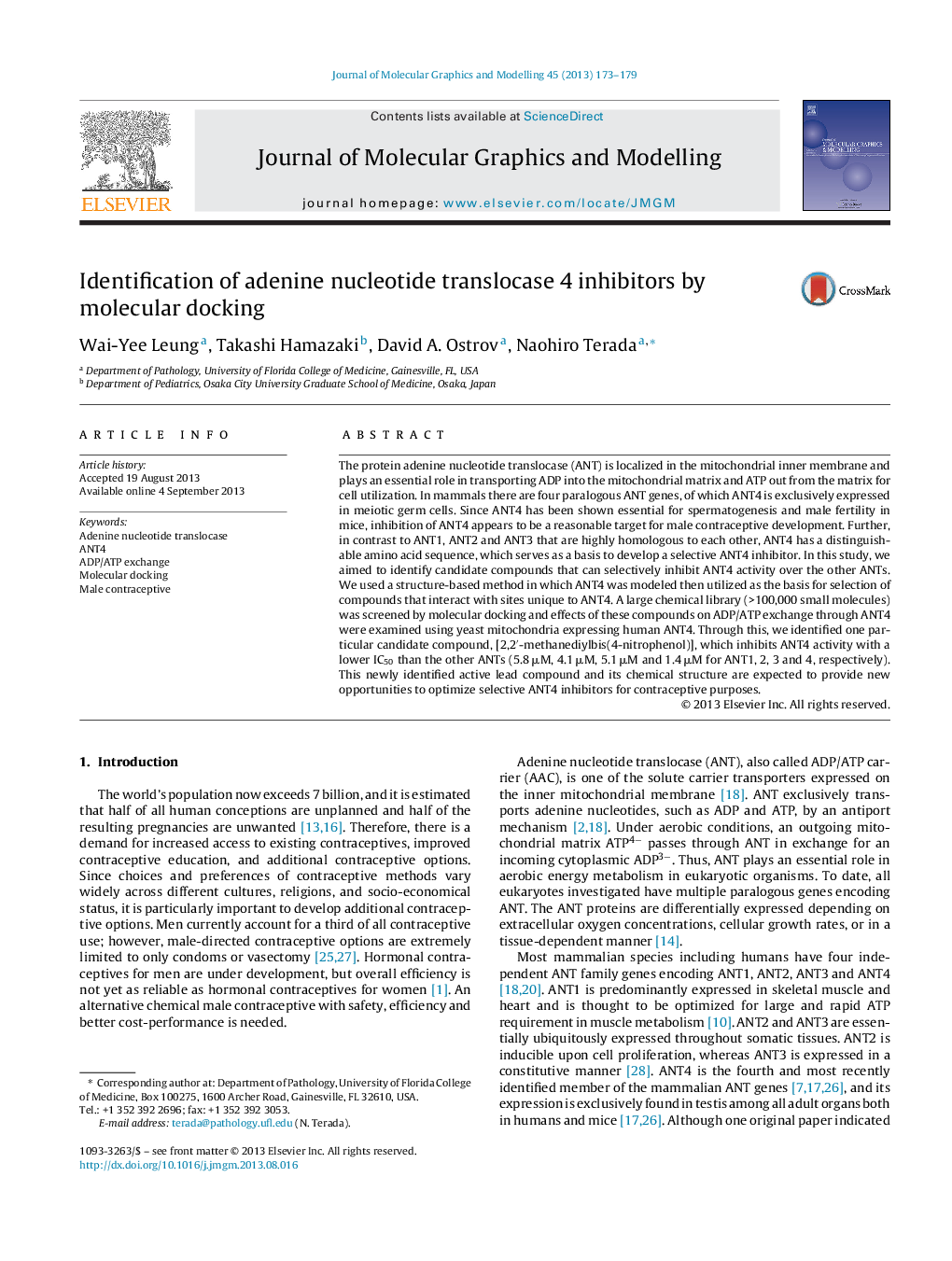| کد مقاله | کد نشریه | سال انتشار | مقاله انگلیسی | نسخه تمام متن |
|---|---|---|---|---|
| 443635 | 692742 | 2013 | 7 صفحه PDF | دانلود رایگان |

• ANT4 is a germ cell specific ATP transporter in mitochondria.
• ANT4 is required for spermatogenesis and male fertility.
• ANT4 has uniquely conserved structure which is different from somatic isoforms.
• Molecular docking identified a compound inhibiting ANT4 with modest selectivity.
• The study provides a basis for developing novel male contraceptives.
The protein adenine nucleotide translocase (ANT) is localized in the mitochondrial inner membrane and plays an essential role in transporting ADP into the mitochondrial matrix and ATP out from the matrix for cell utilization. In mammals there are four paralogous ANT genes, of which ANT4 is exclusively expressed in meiotic germ cells. Since ANT4 has been shown essential for spermatogenesis and male fertility in mice, inhibition of ANT4 appears to be a reasonable target for male contraceptive development. Further, in contrast to ANT1, ANT2 and ANT3 that are highly homologous to each other, ANT4 has a distinguishable amino acid sequence, which serves as a basis to develop a selective ANT4 inhibitor. In this study, we aimed to identify candidate compounds that can selectively inhibit ANT4 activity over the other ANTs. We used a structure-based method in which ANT4 was modeled then utilized as the basis for selection of compounds that interact with sites unique to ANT4. A large chemical library (>100,000 small molecules) was screened by molecular docking and effects of these compounds on ADP/ATP exchange through ANT4 were examined using yeast mitochondria expressing human ANT4. Through this, we identified one particular candidate compound, [2,2′-methanediylbis(4-nitrophenol)], which inhibits ANT4 activity with a lower IC50 than the other ANTs (5.8 μM, 4.1 μM, 5.1 μM and 1.4 μM for ANT1, 2, 3 and 4, respectively). This newly identified active lead compound and its chemical structure are expected to provide new opportunities to optimize selective ANT4 inhibitors for contraceptive purposes.
Figure optionsDownload high-quality image (272 K)Download as PowerPoint slide
Journal: Journal of Molecular Graphics and Modelling - Volume 45, September 2013, Pages 173–179